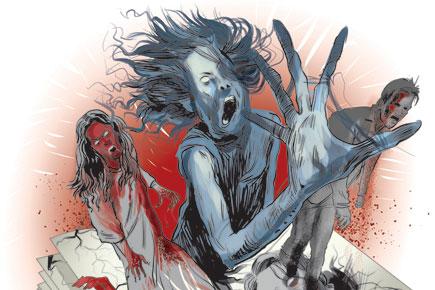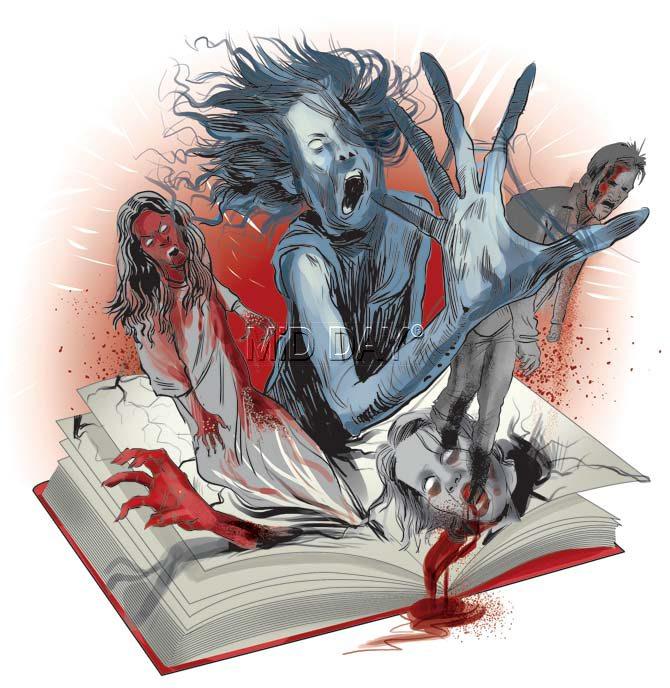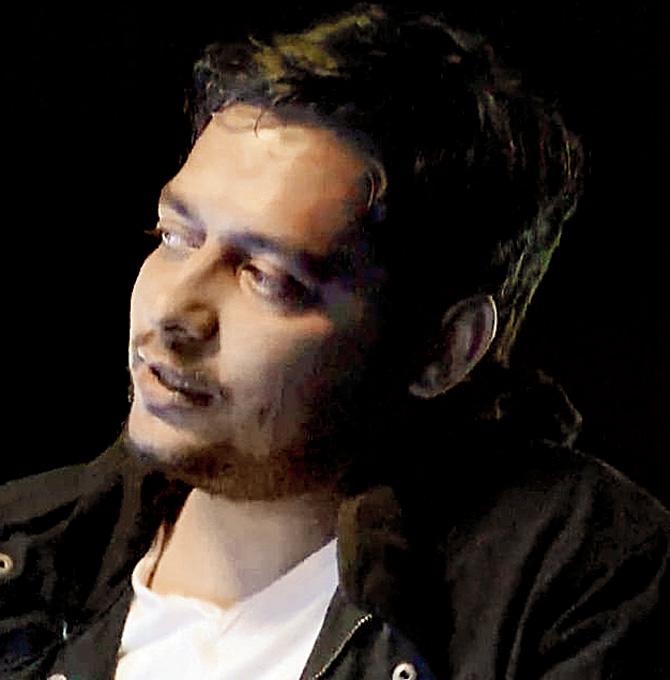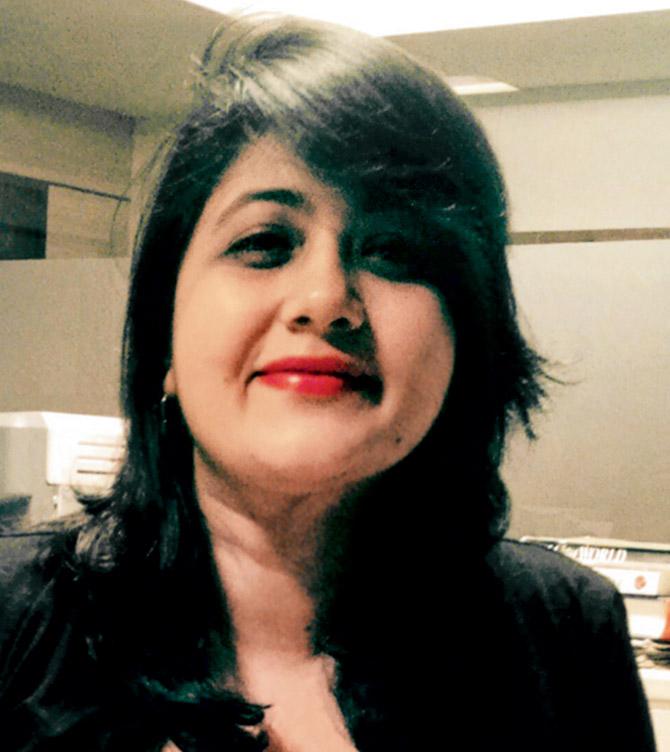As a team of paranormal researchers invites Mumbaikars to share real-life encounters for a pan-India book, we ask what it takes to write a modern-day ghost story


Illustration/Uday Mohite
ADVERTISEMENT
It was pouring. There was a power shutdown. Shishir Kumar woke up at 3 am and made his way to a toilet in the backyard of a dilapidated haveli. The 32-year-old certified paranormal researcher, then a crime journalist, was in his native village Nawalganj Mainpur in northern Bihar. Kumar walked to a corner with a cracked wall, a jackfruit tree and a well. There he saw a woman standing three feet away, smiling eerily at him.
Sounds like the plot of a fiction novel? It's a true story. Kumar, who shared the experience in a Facebook post last April, wrote, "She stood in front of me, 5.4 feet tall, feet hazy, clothes visible, face unclear yet the smile prominent. I ran to wake up my brother and we searched the neighbourhood with a flashlight. We found nothing."
If you have a real-life encounter that's more spine-chilling than his, narrate it at the meet-up, Let's Share Ghost Stories, on May 20. It will be held at the Andheri office of Team Pentacle, a paranormal research organisation founded by Kumar in 2013. Six experts, including Kumar, will sift through the narrations and pick the best 13 stories (the exercise will be repeated in Kolkata, Delhi and Bengaluru) to be compiled into a book titled, India 13, slated for a September release under its home banner, Pentacle Publications.

Kapish Mehra
Finding modern-day ghosts
The judging criteria are simple. "The stories have to be real and appealing. Narrating a tale about walking on a dark street and encountering a lady in a white saree won't work."
However, one can't blame a guest for sharing that story, or another revolving around an ancient haunted house. Prerna Vohra, commissioning editor at Hachette India, reasons, "Ghost stories in India have largely been based in the past, and this holds true for most books in the genre published even today. But that doesn't mean the present cannot be a good setting for a ghost story. All it takes is a good plot and great writing."
Kapish Mehra, managing director at Rupa Publications, which has released Minakshi Chaudhary's Ghost Stories of Shimla Hills and Afterlife: Ghost Stories From Goa by Jessica Faleiro, and a series of novels edited by Ruskin Bond, adds, "A ghost story has to capture a reader's interest, and also be relatable. While it's easier to do that in a regular fiction novel, creating the same in a paranormal situation requires extra effort. A reader usually picks up the book only if s/he has read the author's earlier works or can relate to the setting."

Shishir Kumar
Ghost vs paranormal
Kumar believes that ghosts are different from paranormal experiences. "A ghost is a human spirit, which has had an unnatural death, and lives using electromagnetic field. Meanwhile, paranormal experiences occur due to physical constituents. For instance, a tortoise is unable to see a bee because it's too fast for its shutter speed. It may be paranormal for the tortoise, but doesn't mean the bee doesn't exist."
But in the world of publishing, ghosts share space with other supernatural beings within the realm of paranormal - under the larger umbrella of horror. "The success of books like Twilight has led to a rise in books that fall under 'paranormal romance'. There are several other genres under horror, including psychological, gothic, dark fantasy, and even new-age werewolves, vampires and zombie fiction," says Vohra.
Her publishing house has released Justin Cronin's The City of Mirrors, the third part in his Passage trilogy about a world besieged by vampire-like beings, Thin Air by Michelle Paver that contains a ghost story set during a mountaineering expedition to Kanchenjunga in 1935, and the critically-acclaimed The Fireman by Joe Hill, a post-apocalyptic fantasy novel about a plague that causes people to self-combust.

Prerna Vohra
Indian horror show
Unfortunately, Indian spirits haven't found their due on bookshelves. "Not many contemporary writers in India write paranormal/horror in English. In the West, the genre has thrived for centuries with stalwarts like Edgar Allen Poe, Anne Rice and Stephen King leading the way," observes Vohra, adding, "There are, of course, fans of the genre who still pick up these books, but as fiction in general is finding fewer takers in the Indian market these days, this, too, has suffered," states Vohra.
Facing competition from horror movies and TV shows, it's not surprising to hear that Rupa Publications decided to adapt the popular tele-series Gumrah into a book featuring 11 short teen crime stories. It was a success. "The Indian audience is evolving, and so, the writing will evolve too," hopes Mehra, currently juggling between two Young Adult horror manuscripts.
 Subscribe today by clicking the link and stay updated with the latest news!" Click here!
Subscribe today by clicking the link and stay updated with the latest news!" Click here!






